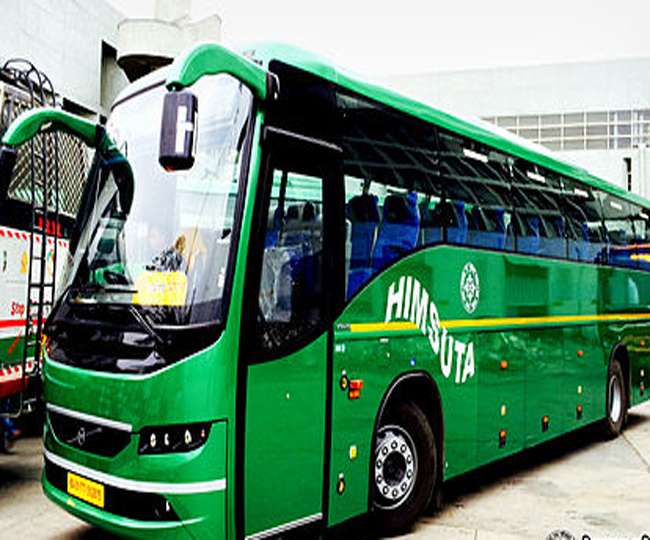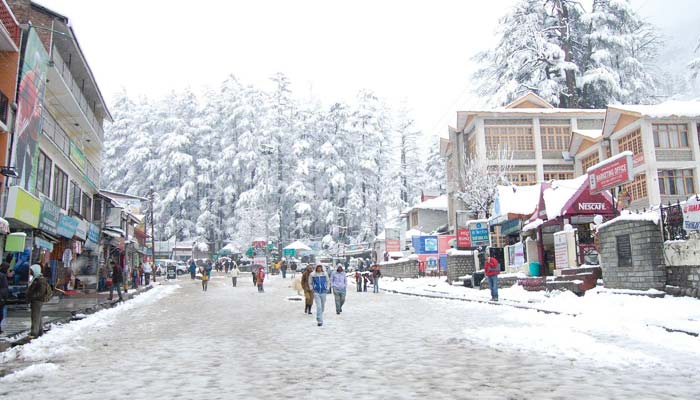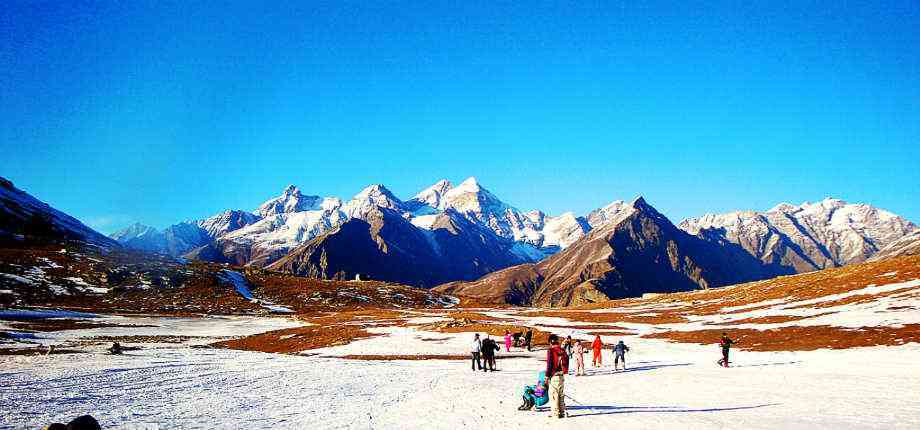Are You Planning Manali Holiday Trip?
Share Your Manali Trip Requirments With Us
Get Best Deals on Manali Trip And Save Money
Get Manali Tour Package From GotoExplore
Trusted By 14053+ Tourists All Over India
- Home
- Himachal Pradesh Tour Packages
- Manali Tour Packages
Manali is one of the famous Adventure Tourist Destination of Himachal Pradesh. A lot of tourist came every years in Manali with family or friends to enjoy there vacation in Manali. GotoExplore offers a tour Package for Manali from the different locations of India. Our Manali Package includes Train/Flight, Hotels, Meals, Cab for nearest sightseeing and pick and drop facility. Package customization of Manali Package can also be done as your requirement. If you share your Manali tour requirement with us then you will get quotations of your Manali Package from the local travel agency who can organized the Manali trip. Some of the popular Manali Tour Packages are listed here.
Manali Tour Packages
Manali is one of the best holiday destinations in India. Here's a list of Manali Travel Packages
- Hotel
- Meals
- Taxi
- Guidance
- Hotel
- Meals
- Taxi
- Guidance
- Hotel
- Meals
- Taxi
- Sightseeing
- Volvo
- Guidance
- Hotel
- Meals
- Taxi
- Sightseeing
- Train
- Guidance
- Hotel
- Meals
- Taxi
- Sightseeing
- Volvo
- Guidance
- Hotel
- Meals
- Taxi
- Sightseeing
- Volvo
- Guidance
- Hotel
- Meals
- Taxi
- Sightseeing
- Volvo
- Guidance
- Hotel
- Meals
- Taxi
- Sightseeing
- Train
- Guidance
- Hotel
- Meals
- Taxi
- Sightseeing
- Guidance
- Hotel
- Meals
- Taxi
- Sightseeing
- Guidance
Latest Post From Manali Travel Blog
About Manali Tour Package
Manali literally means the 'Home of Manu'. Legend has it that when a flood deluged the earth, Manu and the gods were towed to dry ground by a giant fish, which was the seventh `avatar' of the god Vishnu. The area where Manu eventually found refuge was Manali. He then came to Manali and recreated human life. Thus, the area of Manali is sacred and Hindus treat the temples over here as pilgrimage and its name finds mention in various epics, the Ramayana and the Mahabharata as well as Vishnu Purana.
SIGHTSEEING
The Mall Road (1.5 km.)
The Mall, or main road of Manali is the hub of activity in this tourist town, lined with hotels, restaurants, shops, the bus station and many travel agencies. Though it carries the same British epithet as its counterpart in Shimla, the Mall of Manali has an entirely different character from the colonial flavour of the former. It is more of a busy commercial street with modern concrete blocks of hotels that spills over with tourists in the peak season. Most of the hotels overlooking the foaming Beas River, however, do offer pleasant views of the valley, green terraced fields and the surrounding orchards.
Manalsu Nala
To get a more authentic flavour of the area, take a half-hour walk from the Mall across the Manalsu nala to reach the village of old Manali. Also known as Manaligarh, the village has a ruined fort and a cluster of houses built in the Pahari style - with heavy stone roofs and wooden balconies projecting out of the first floor. According to popular belief it is here that Manu, the lawmaker lived around the 2nd century BC. His treatise, the 'Manusmriti' is the foundations of Hindu law and of the rigid caste system based on varna or profession. Considered one of the most orthodox Hindu texts with strict role definitions based on gender and class, the Manusmriti continues to be followed by many devout Hindus even today. In the centre of the village is the Manu Maharishi temple, a relatively new shrine dedicated to Manu. The village itself is an idyllic break from the rush of main Manali, surrounded by terraced maize fields and apple orchards. There are several guesthouses and cafes lining the path to the village.
Hadimba Devi Temple (1 km.)
Hadimba or Dhungiri temple in Manali is one of the most important temples in the region. This four story wooden temple is located in the middle of a forest called the Dhungiri Van Vihar a 2 km walk from the Tourist office in Manali. Maharaja Bahadur Singh built the present wooden pagoda-like temple in 1553 after forest fires burned down earlier structures. Standing on a stone platform surrounded by old deodar trees, the three-tiered temple is crowned with pennants, brass bells and a trident. Carvings of animals, plants and folk deities adorn the temple, while hunting trophies hang over its entrance.
Inside the shrine is the brass icon of the goddess, surprisingly tiny compared to the huge temple structure and the legendary prowess associated with her. The shrine is within a natural cave formation dominated by huge rock. A set of enlarged footprints on the rocks is believed to be of Hadimba, herself. In mid-July the idol from old Manali is brought to this temple for a major festival. As part of the frenzied celebrations, several animals including a buffalo and a goat are sacrificed to the goddess. The blood falling on the stones is channeled to the mouth of goddess Hadimba. Not for the faint-hearted, this ancient ritual draws large crowds, along with some pickpockets who take advantage of the spellbound mobs.
Gadhan Thekchoking Gompa (2 km.)
This Gompa dominates the Tibetan area around the bottom of the Mall in Manali. The Tibetan refugees built the Gompa in the late 1960's. The Gompa is covered with brightly coloured frescoes and a mid size Buddhist statue. It also carries a list of the martyrs killed in occupation of Tibet of 1987 to 1989. Inside the brightly painted prayer hall is a statue of Shakyamuni (form of Buddha). The monastery is maintained through donations and the sale of carpets woven by the lamas within the temple workshop. A smaller gompha near the market has a large gold-faced image of Buddha, which is best viewed from its first floor verandah. Monks can be seen printing prayer flags in the open terrace.
Temple Of Manu (1 km.)
Slippery stones paths lead through the old village houses up to the temple of Manu. Manali is named after the sage Manu who meditated when he came in this area.
Tibetan Temple (2 km.)
Tibetans have a base in Manali too. There is a large modern Tibetan temple to the South of the bus stand and also a small handicrafts centre.
Old Manali (3 km.)
The old Manali area is located some 3-km from the present day Manali. The old Manali is covered with guesthouses, which look ancient now, and orchards where the livestock move at will.
Vashishta Hot Sulphur Springs (4.5 km.)
This small village near Manali is famous for its scenic beauty. The village has a temple dedicated to Lord Rama and Vashishta Muni. The village has some hot water springs, which are said to carry medicinal properties. It is a picturesque little place, 3-km out of Manali but on foot the distance is a bit shorter.
Mountaineering Institute (6 km.)
The Mountaineering Institute located at Manali provides training facilities for basic and advance climbing both for Indian nationals and foreigners. This institute also conducts other adventurous sports activities like high altitude trekking, minor mountaineering, rock-climbing, skiing, and high altitude rescue and relief courses. The institute has sufficient lodging and boarding arrangements and equipment can be hired for trekking purposes.
EXCURSIONS FROM MANALI
Rohtang Pass (50 km.)
Rohtang Pass is the highest point, 4,112m, on the Manali-Keylong road, 51-km from Manali town. It provides a wide panoramic view of mountains rising far above clouds, which is a sight truly breath-taking.
Arjun Gufa (5 km.)
On the left bank of the Beas, 5-km from Manali near the village of Prini, is the 'Arjun Gufa' or the cave of Arjuna. In here Arjuna practiced austerities to get Pashupata Ashtra or weapon from Lord Indra.
Beas Kund (50 km.)
It is the source of river Beas, at the Rohtang Pass and is easily accessible. The great sage, Vyas performed `Tapa' here during the Mahabharat times. The place is still hallowed by the celestial light. It was because of this that the river got the present name of Beas.
Jagatsukh Temple (6 km.)
It is one of the biggest villages in Kullu district. About 6-km from Manali, Jagatsukh is famous for its Shiva temple that is built in "shikhara" style and nearby is the old and interesting Devi Sharvati temple.
Kothi (12 km.)
It is a pretty little village, 12-km from Manali on the Keylong road at the foot of Rohtang Pass. There are very fine views from Kothi, and the Beas River flows through a very deep and narrow gorge at this point. The well-situated Public Works Department (PWD) Resthouse is a popular place for overnight stays. Close to the rest house is an awe-inspiring gorge where Beas enters a chasm about 61m deep and just few metres broad.
Solang Nullah (14 km.)
14-km northwest of Manali in the Solang Valley, this place offers Himachal Pradesh's best ski slopes. The Mountaineering and Allied Sports Institute operates a 300m high ski lift and the month of February is the best month to ski over here. HPTDC runs seven-day package for ski courses with accommodation in the Hotel Rohtang Manaslu in Manali. Courses are also offered by the Mountaineering and Allied Sports Institute and the North Face Ski School.
Rahalla Falls (16 km.)
About 16-km from Manali and 4-km away from Kothi, at the start of the climb to the Rohtang Pass, are the beautiful Rahalla Falls at an altitude of 2,501m.
Naggar (28 km.)
On the left bank of the Beas and about three hundred metres above the river, Naggar is delightfully situated on a wooded slope and commands an extensive view, especially of the north west of the valley. It is an excellent place for a longer stay. Naggar was the capital of the Kullu Rajas for about 1,400 years. There are a large number of famous temples in and around Naggar. Artist Nicholas Roerich's art gallery is also worth a visit. Cars and jeeps can easily go up to the Naggar Castle, which is now Himachal Tourism's well-furnished Hotel Castle.
Manikaran (45 km.)
On the trekking route to Pulga and Pin Parvati pass, Manikaran is famous for its hot springs. Thousands of people take a dip in its hot waters. The water is so hot that dal (pulses); rice etc. can be boiled in it. It is also a well known pilgrimage centre and there is an ancient Hindu temple and a gurudwara here. According to a legend, Manikaran is also associated with Lord Shiva and his divine consort, Parvati, who lost and recovered her earring here.
Bijli Mahadev Temple
The Bijli Mahadev temple one of the most striking temple is set on a spur, and is famous for its 60 ft high staff, which periodically attracts lightning that shatters the Shivalinga. Each time this happens, it is pieced together by the temple priest.
Kasol
Situated on the banks of Parvati river, Kasol in the Parvati valley makes a good holiday destination. Charmingly located in an open space, which slopes down to a broad expanse of clear white sand at the edge of the river. The place is known for trout fishing.
Malana
28 km. up to Naggar by bus and then 20 km. on foot. A little ahead off the beautiful Chandrakhani pass lies the tiny village of Malana, famous for the temple of Jamlu and its distinct social and cultural life. Reputed to be the oldest democracy in the world in existence where all the inhabitants of the village take part in managing its affairs. An exciting place for trekking.



